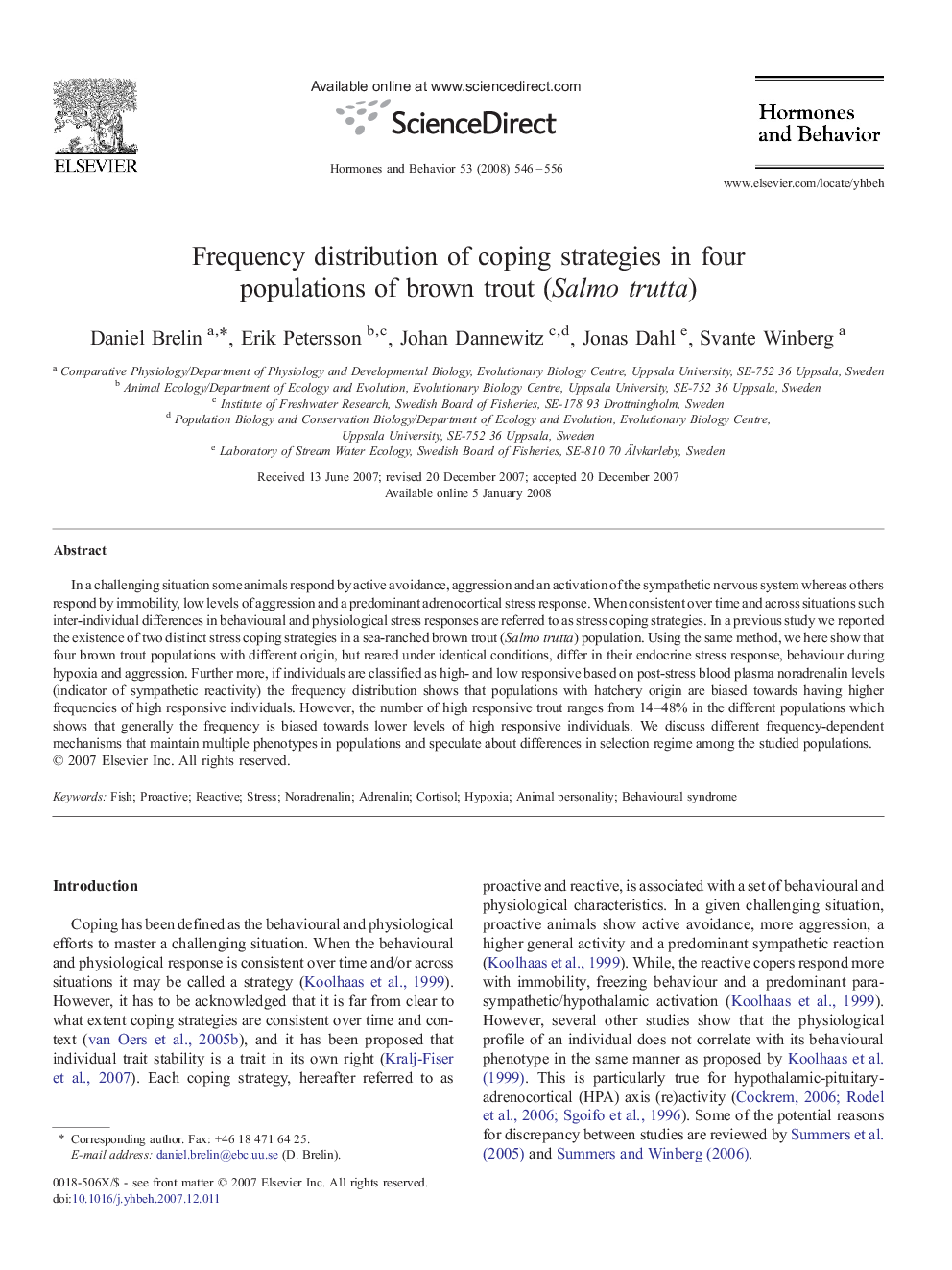| Article ID | Journal | Published Year | Pages | File Type |
|---|---|---|---|---|
| 323275 | Hormones and Behavior | 2008 | 11 Pages |
In a challenging situation some animals respond by active avoidance, aggression and an activation of the sympathetic nervous system whereas others respond by immobility, low levels of aggression and a predominant adrenocortical stress response. When consistent over time and across situations such inter-individual differences in behavioural and physiological stress responses are referred to as stress coping strategies. In a previous study we reported the existence of two distinct stress coping strategies in a sea-ranched brown trout (Salmo trutta) population. Using the same method, we here show that four brown trout populations with different origin, but reared under identical conditions, differ in their endocrine stress response, behaviour during hypoxia and aggression. Further more, if individuals are classified as high- and low responsive based on post-stress blood plasma noradrenalin levels (indicator of sympathetic reactivity) the frequency distribution shows that populations with hatchery origin are biased towards having higher frequencies of high responsive individuals. However, the number of high responsive trout ranges from 14–48% in the different populations which shows that generally the frequency is biased towards lower levels of high responsive individuals. We discuss different frequency-dependent mechanisms that maintain multiple phenotypes in populations and speculate about differences in selection regime among the studied populations.
